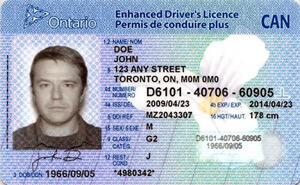
questions
correct answers to pass
passing score
- A carrier is rated Unsatisfactory for the duration of any of the following EXCEPT
- Carriers are rated based solely on their CVOR violation rate under which circumstance?
- Which of the following statements is untrue? A carrier could be considered for a Conditional Safety Rating due to which situation?
- What is required for an operator to move from a Conditional rating to a higher rating such as Satisfactory-Unaudited or Satisfactory?
- Which statement about a carrier being eligible for a Satisfactory Safety Rating is incorrect?
- Which of these conditions doesn’t apply for a carrier to be eligible for an Excellent Safety Rating?
- How many potential safety ratings can an operator receive?
- When is the Overall Audit Score labelled as Excellent?
- If a facility audit was conducted some time ago, how long can it be considered for an upgrade to a Satisfactory or Excellent Safety Rating?
- What aspect is not included in determining an operator's safety record by The Deputy Registrar of Motor Vehicles?
- If the overall audit score passes a particular threshold, it's considered a pass. What is this critical percentage?
- After an unsuccessful audit, what type of rating may a carrier receive?
- Once an Excellent rating is granted, what is the maximum collision violation rate, in terms of percentage of the collision threshold, that the operator must maintain?
- How can a carrier upgrade its Safety Rating to Satisfactory or Excellent?
- To retain an Excellent rating, what is the maximum overall violation rate an operator must maintain, in terms of percentage of the overall CVOR threshold?
- Apart from typical triggers, who uses other methods to flag an operator to the ministry, such as major incidents?
- Based on what is a collision-points threshold value determined for each operator?
- In the context of truck and bus operators, what does the term Carrier Safety Rating (CSR) refer to?
- For how long is a Conditional rating effective?
- What can carriers that have volunteered for an audit and failed the audit but have an overall violation rate of 50% or less apply for?
- In the event of a second vehicle impoundment within a two-year period, how long is the duration of the impoundment?
- After a vehicle is inspected and found to have critical defects, any of the following can be charged EXCEPT
- At what locations are inspections for critical defects and vehicle impoundments carried out?
- When will the vehicle's plates and permits be reissued?
- What occurs after a vehicle has served its minimum impoundment period?
- An appeal against a vehicle impoundment decision can be made to which body?
- Is a commercial vehicle found with a critical defect typically in a worse condition than a vehicle that just meets out-of-service criteria?
- What charge is the vehicle operator liable to face?
- When an operator's overall violation rate exceeds 1 (100 percent), how is this status referred to?
- The impoundment period is 15 days for the first incident within
- What happens to commercial vehicles that are left abandoned at impound facilities?
- What happens to the load when a vehicle needs to be impounded?
- If the Order to Impound and Suspend is upheld, what must happen?
- The minimum duration for impoundment of critically defective commercial vehicles is...
- The owner of the vehicle can appeal the impoundment. An appeal may be made to the Licence Appeal Tribunal on which of the following grounds
- For removal of plates and inspection stickers from a specific vehicle unit like a bus, truck, or trailer, how many critical defects need to be identified?
- When calculating the total number of commercial motor vehicles operated in Ontario under the operator's CVOR certificate, which vehicles are excluded?
- In which scenario will the owner be reimbursed by the Crown for the cost of towing and impound fees?
- When would towing fees, floating, storage fees, and transfer costs be higher than initially established in contracts between MTO and impound facilities?
- Who can appeal the decision to impound a commercial vehicle?
- How long is a commercial vehicle impounded following a third or subsequent incident within a two-year period?
- What certification is required for a vehicle to certify that it is safe to operate in Ontario?
- Who is responsible for the transfer of loads and lost perishable cargo?
- Where should an owner apply to have their vehicle released from an impound facility once all fees and towing charges have been paid and security has been posted during an appeal?
- Under which circumstance is a collision considered to have 'impropriety'?
- Which of these vehicles cannot be impounded under the Commercial Vehicle Impoundment Program?
- What happens to the passengers when buses are impounded?
- What happens when a vehicle is detected to have critical defects?
- How are vehicles that cannot be made safe for towing impounded?
- When an operator calculates the total number of commercial vehicles run in Ontario under the operator's CVOR certificate, which vehicles are not considered?

